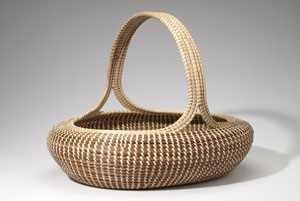 Introduction | What is a basket? | African Rice and Baskets | The Lowcountry | Rice and Baskets Post Civil War to the Present | The Sweetgrass Revolution | African Baskets Today  Humble but beautifully crafted coiled baskets have been made in Africa for millennia and by Africans in the American South for as long as they have been on these shores. Once common agricultural tools, baskets are also containers of memory, repositories of history, symbols of identity and works of art.  More than 300 years ago, people from Africa brought an understanding of rice cultivation and skills as basket makers to plantations in North America. Their knowledge and labor transformed the landscape and economy of the province of Carolina and made rice the colony's first major export crop. Despite working under the brutal conditions of slavery, African peoples did not forget their rich cultural traditions. More than 300 years ago, people from Africa brought an understanding of rice cultivation and skills as basket makers to plantations in North America. Their knowledge and labor transformed the landscape and economy of the province of Carolina and made rice the colony's first major export crop. Despite working under the brutal conditions of slavery, African peoples did not forget their rich cultural traditions. The grasses and sedges that grow in the South Atlantic marshlands were ideal for making coiled baskets. The plantation system demanded huge quantities of a few kinds of work baskets, most notably winnowing trays and carrying baskets, both essential for processing rice, and as a result coiled baskets became signature forms made by Africans in America. The coiled basket has no single place of origin in Africa: its roots are in Senegal, Guinea, Sierra Leone, Angola and the Democratic Republic of the Congo. It represents a mingling of many diverse cultures. Today, African American baskets are both a reminder of this African heritage and a distinctive and uniquely American art.  Nathaniel Johnson, Director of Education and the Education department at the Museum for African Art, New York, New York designed this wonderful resource guide for teachers and learners to use. Download it here (pdf, 4 mb.) Grass Roots: African Origins of an American Art is organized by the Museum for African Art, New York, in cooperation with Avery Research Center for African American History and Culture at the College of Charleston, McKissick Museum at the University of South Carolina and the Sweetgrass Cultural Arts Festival Association. |
